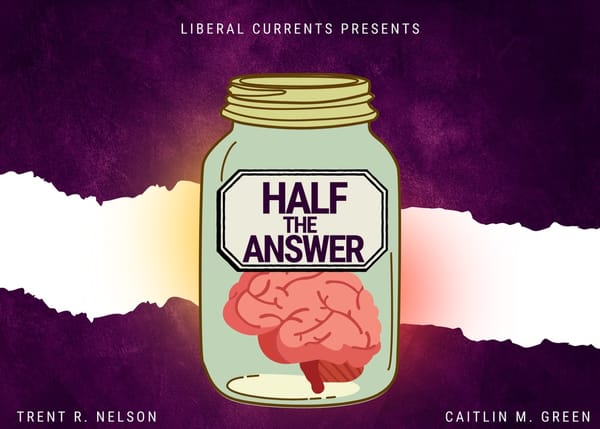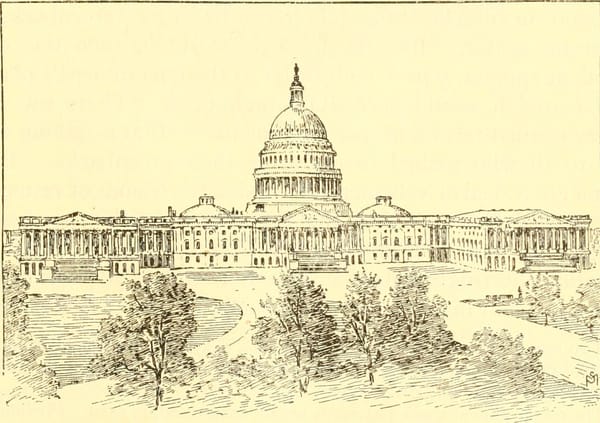A Revolution in Favor of Taxes and Standing Armies

The standard story behind America’s founding goes something like this. In an effort to break the chains off tyranny and unrepresentative tax schemes, American colonists staged a rebellion and, soon, a full-fledged revolution against their mother country, Great Britain. After the hard-won, almost miraculous, victory some Americans realized that the Articles of Confederation were weak and ineffective. Although not everyone agreed, some men, with the begrudging assent of the Confederation Congress, decided to get together in order to amend, perhaps even revise, the Articles of Confederation. What came out on the other end was the United States Constitution.
What was the purpose of this new Constitution? What did it mean, and, more importantly, what did those who participated in the ratification debates think it meant? A few things. It was a check on the excesses of democracy that many of the delegates had seen erupt in their individual states both during and after the Revolution; it was a document whose primary aim was to place limits on excessive government; it was, others say, a proto-liberal argument for individual rights and small government; it was, as the interpretations of Bernard Bailyn and Gordon Wood took hold, an experiment in republicanism. None of these interpretations is wrong, but the mythical air that often surrounds the Founding eclipses another aspect of our Constitution. Put another way, the Constitution was more than an “effort by a troubled national elite to put a brake on populistic forces in the revolutionary states, restore direction of the nation by a ‘better sort’ of men, and safeguard private rights and long-term public needs against majority excesses.”
In A Revolution in Favor of Government Max Edling offers a different take: that the Constitution, when viewed in a comparative and international context, wasn’t all that revolutionary or even all that original. The Constitution, he says, was more or less an attempt to build a powerful state in very much the same vein as European nations had been doing for centuries. He argues that “both federalists and antifederalists… saw the Constitution as the means of creating a national government able to carry out the functions of the contemporary [European] state.” Preventing total disenchantment with our founding, Edling says that what was nonetheless peculiar about the United States Constitution and the debates surrounding it was that the framers had the daunting task of not only building a powerful enough state to compete with and defend itself from European powers, but to build a European-style state that was palatable to a populace that had a significant anti-statist tradition and had just cashed in on that impulse in the form of a revolution. According to Edling, the framers asked themselves: “How was the government to exercise its fiscal-military powers without exerting undue pressure on the citizens, thereby challenging their anti-statist perceptions?”
Edling argues that there are essentially four functions of states: they monopolize political power, wage war, protect allies, and extract resources from the citizenry. War, Edling points out, was the driving force behind most European state-building ventures—both the reality and fear of war was never far from the minds of the framers. And although far from a full-blown war, one could make the case that Shays’ Rebellion and the fear of similar uprisings loomed heavy in the minds of those at the Constitutional Convention during that hot summer of 1787.
As it happened, the antifederalists, as they came to be known somewhat ironically since they were in favor of federalism, opposed standing armies, massive tax-extracting bureaucracy, and the centralization of authority at the expense of the individual states. Pretty much all four functions of an effective state. Madison knew, however, that the Articles were too weak: they had given Congress the authority to make decisions but hadn’t given them the means of carrying out those decisions. The Confederation Congress could declare war but could neither raise an army nor make a treaty without unanimous consent of all the states—an almost impossible task considering the relationship between the individually diverse states. Although many colonists and framers were blind to the fact, the Revolution’s success came despite challenges posed by the Articles, not because of it. The framers knew that if they were to resist subjugation by some eager foreign power, they would have to build something very similar to the British state. “No other government,” Edling says, “was nearly as successful as the British when it came to raising taxes and mobilizing resources and men.”
Oddly enough, the issues of raising armies and taxes—the two things necessary for state building—went over relatively smoothly during the Constitutional Convention as compared to issues over the executive branch and the always-fiery debates over representation and apportionment. This fact alone is reason enough to tip our hats to Edling’s interpretation. But adding force to the argument is the further fact that the script flipped once the Constitution left the comforts of the Pennsylvania State House: the issues of a standing army as well as the Congress’s near-total taxation power exploded in the ratification debates that followed. And although each individual state was only to give a yes or no vote to the Constitution, they were allowed to debate it—sometimes even line-by-line. Edling is right to point out that the ratification debates are important, perhaps even more important than the “original intentions” of the framers, since they give us “the first widely shared and detailed interpretation of important clauses in the Constitution.”
The antifederalists could never really put together a unified front nor offer a positive program in response to the proposed Constitution, but their opposition was far from just hot air. As Edling points out, antifederalists drew their intellectual lineage directly from opposition-Country thought, something readers of Bailyn’s Ideological Origins should be familiar with. Beneath all the overblown and exaggerated rhetoric of Country-bred antifederalists was a core belief in the eternal struggle between power and liberty, with the latter being the natural victim to the former. They believed that only a vigilant jealousy could keep rulers in check and that even the slightest concession to those in power was but a small step on the road to total subjugation. The destruction of liberty, for those of Country-antifederalist persuasions, didn’t happen all at once but in tiny, barely visible encroachments. “To country spokesmen, no matter how limited a government act may have been, liberty was always in the balance.” To grant the Constitution so much right out in the open would be a direct affront to their anti-standing army and anti-statist intuitions.
Drawing alternative lessons from history and philosophy, the federalists followed Oliver Ellsworth: “If we mean to have our natural rights and properties protected, we must first create a power which is able to do it.” In other words, quite the opposite was true. Total control over taxes and armies was necessary for the safeguarding of individual rights and the protection from foreign invaders—the latter a thought that many historians believe is the reason Georgia ratified the Constitution so quickly, there being Native Americans and Spanish on their doorstep. “Federalists did not regard military strength, including a standing army in time of peace, as a threat to American independence, liberty and happiness.” “On the contrary,” Edling explains, “a professional army and an unlimited power over mobilization were prerequisites for the preservation of the union’s independence.”
In the end, we all know how it turned out: federalists got their way, antifederalist fears were partly addressed with the promise and eventual passage of a Bill of Rights, the Hamiltonians rammed their financial program through, and the process of state building, only a latent potentiality for the next 70 years, was off. As Edling rightly argues, the Madisonian and federalist dreams of a powerful, centralized authority fizzled and states remained the primary locus of political power until after the Civil War; it was only with the passage of the 14th Amendment that the fulfillment of Madison’s ultimate plan came to fruition.[1]
Edling’s contribution to the literature is to emphasize that both federalists and antifederalists agreed on the need for a more powerful central authority but quibbled about how much authority was necessary and what the extent of the new government’s extractive powers ought to be. Federalists asked how rights and freedoms could be protected in the absence of the necessary powers, while antifederalists feared that excessive taxes would be extracted from the people by the end of bayonets from a large standing army. Federalists hoped for an invisible, largely silent but nonetheless powerful government; antifederalists worried that their compatriots were being naive. Both had legitimate arguments and fears, and in retrospect both were naively optimistic in their own ways. Federalists couldn’t see how Congress’ power to tax could mix with the ambiguously phrased but conveniently placed “necessary and proper” clause to create that terrible, unaccountable bureaucracy that antifederalists feared would be out of touch and oppress the people; antifederalists couldn’t see how more than independent militias and a requisition system—both of which performed poorly during the Revolution—would be necessary in order to keep their rights and their independence from greedy European powers.
If Edling is right, we shouldn’t be surprised at what the American state has become. He suggests that his study might “raise questions about American exceptionalism,” but he never comes right out and says what those questions might be. Perhaps our American exceptionalism—and by extension our grandiose proclamations about “what this country stands for”—ought to be tempered by the fact that our country wasn’t, in fact, built upon a foundation of republicanism and liberalism? Might we, if we inject a bit more contingency and realpolitik into the matter, see that the American state building process as little more than a “keeping up with the Joneses” with a bit of our own political traditions and practices mixed in?
It’s hard to imagine what consequences Edling thought would come of his study. Borrowing from Kramnick’s commentary on the ratification debates, even Edling points out the hodgepodge of intellectual traditions we find in the founding era: “Protestant ethic, reason of state doctrine, natural and common law arguments, French as well as Scottish enlightenment thought, in addition to liberalism and classical republicanism” all made their appearances at some point, in some form, in their own way. Edling’s book forces us to insert yet another “tradition” into this jumble: European-style state building.
[1]It should be noted that Lance Banning persuasively argues that Madison’s hope for a Congressional veto over state laws was not evidence of his wanting a stronger national government. In fact quite the opposite was true: Madison’s want of a Congressional veto was due to his belief that the individual states would still dominate the political landscape, and the weak federal government would need a way to prevent the states from meddling in its jurisdiction. “Madison’s insistence on a federal right to veto all state laws has usually been taken as an indication of how far he wished to go toward a consolidation of authority of central hands. This is a serious mistake. In context, the idea emerged precisely from the framer’s wish to find a constitutional device that would secure the general government’s supremacy within a system where the overwhelming burden of political responsibilities would still be carried by the states. It was an effort to create a “sovereign” central government by one who still assumed that there must be a sovereign somewhere, but who also still assumed that the United States was to remain a federation of republics, whose general government would be responsible for only certain, common duties.”
Featured image is Scene at the Signing of the Constitution of the United States, by Howard Chandler Christy




